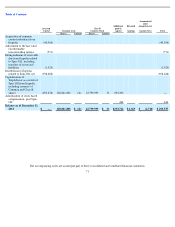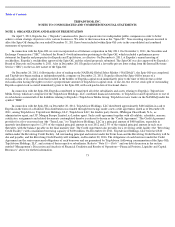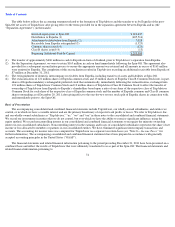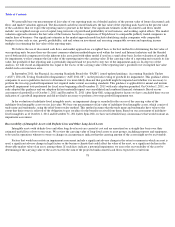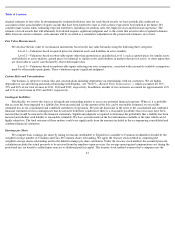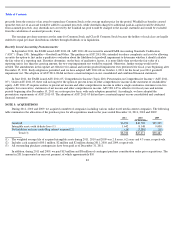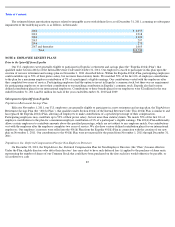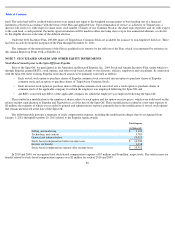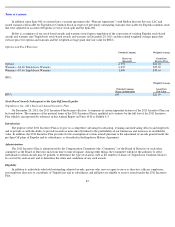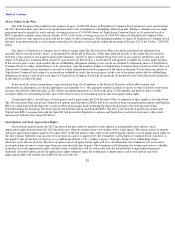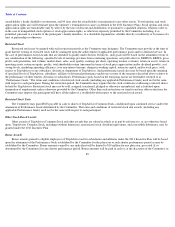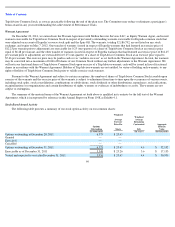TripAdvisor 2011 Annual Report Download - page 85
Download and view the complete annual report
Please find page 85 of the 2011 TripAdvisor annual report below. You can navigate through the pages in the report by either clicking on the pages listed below, or by using the keyword search tool below to find specific information within the annual report.
Table of Contents
original estimates of fair value. In determining the estimated forfeiture rates for stock-based awards, we have periodically conducted an
assessment of the actual number of equity awards that have been forfeited to date as well as those expected to be forfeited in the future. We
consider many factors when estimating expected forfeitures, including our attrition rates, the employee class and historical experience. The
estimate of stock awards that will ultimately be forfeited requires significant judgment and, to the extent that actual results or updated estimates
differ from our current estimates, such amounts will be recorded as a cumulative adjustment in the period such estimates are revised.
Fair Value Measurements
We disclose the fair value of our financial instruments based on the fair value hierarchy using the following three categories:
Level 1—Valuations based on quoted prices for identical assets and liabilities in active markets.
Level 2—
Valuations based on observable inputs other than quoted prices included in Level 1, such as quoted prices for similar assets
and liabilities in active markets, quoted prices for identical or similar assets and liabilities in markets that are not active, or other inputs that
are observable or can be corroborated by observable market data.
Level 3—
Valuations based on unobservable inputs reflecting our own assumptions, consistent with reasonably available assumptions
made by other market participants. These valuations require significant judgment.
Certain Risks and Concentrations
Our business is subject to certain risks and concentrations including dependence on relationships with our customers. We are highly
dependent on our advertising and media relationship with Expedia, (see “Note 9— Related Party Transactions ”), which accounted for 33%,
35% and 40% of our total revenue in 2011, 2010 and 2009, respectively. In addition, another of our customers accounted for approximately 16%
and 11% of our revenue in 2011 and 2010, respectively.
Contingent Liabilities
Periodically, we review the status of all significant outstanding matters to assess any potential financial exposure. When (i) it is probable
that an asset has been impaired or a liability has been incurred and (ii) the amount of the loss can be reasonably estimated, we record the
estimated loss in our consolidated and combined statements of operations. We provide disclosure in the notes to the consolidated and combined
financial statements for loss contingencies that do not meet both these conditions if there is a reasonable possibility that a loss may have been
incurred that would be material to the financial statements. Significant judgment is required to determine the probability that a liability has been
incurred and whether such liability is reasonably estimable. We base accruals made on the best information available at the time which can be
highly subjective. The final outcome of these matters could vary significantly from the amounts included in the accompanying consolidated and
combined financial statements.
Earnings per Share
We compute basic earnings per share by taking net income attributable to TripAdvisor available to Common stockholders divided by the
weighted average number of Common and Class B Common shares outstanding. We apply the treasury stock method in computing the
weighted-average shares outstanding used in the diluted earnings per share calculation. Under the treasury stock method, the assumed proceeds
calculation includes the actual proceeds to be received from the employee upon exercise, the average unrecognized compensation cost during the
period and any tax benefits credited upon exercise to additional paid-in-capital. The treasury stock method assumes that a company uses the
81


